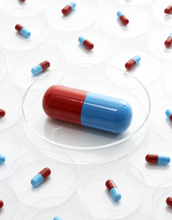A lot of people talk about “detox” diets, or drinks or sweat lodges, or pills or whatever. Almost all of that stuff is bunk. It doesn’t really do anything other than make you sweat, or go to the bathroom a lot, neither of which is guaranteed to remove toxic substances from your body. There was however some interesting science done on how our body breaks down toxic substances.
Chemical reactions are happening all over the place all the time–on the sun, on the Earth and in our bodies. In many cases, enzymes help make these reactions occur. One family of enzymes, called cytochrome P450s (P450), is important because they help us eliminate toxins.
We know P450s are important to life of all kinds because they have been found in animals, plants, fungi and bacteria, but they are of special interest to humans because they are responsible for metabolism of about 75 percent of known pharmaceuticals.
“The reactions that P450s perform to detoxify a compound are interesting because they activate chemical bonds that are usually not reactive. Chemically speaking, this is a very difficult thing to do in a controlled way,” said Michael Green of the department of chemistry at Penn State University. Green and a former student are authors of a paper describing a breakthrough in isolation of P450 compound I, an important chemical intermediate in the process of drug metabolism. This research, supported by the National Science Foundation, appears in the November 12 issue of the journal Science.
In terms of P450s, we humans aren’t all the same. One person can be susceptible to poisoning by a toxin or drug more than another based on the levels of the different P450s they have in their liver, lungs and other organs. With such obvious medical and biological importance, these enzymes have been studied in great detail for many years, but exactly how they are able to catalyze these chemical reactions remains to be determined.
At the heart of the problem is P450 compound I. It is a highly reactive chemical species produced by the P450 enzyme to help metabolize a toxin or drug. Because of this extreme reactivity, compound I turns into something else before scientists have a chance to capture it. This has remained a problem for more than 40 years, prompting some to question its very existence.
“This work confirms the existence of compound I, and demonstrates that it can perform the type of chemical reactions for which P450s are known,” stated Green. “Now that we can make this chemical species, we can begin to do larger scale studies to understand just how it performs this chemistry.”
The research has impact on two major fronts: medicine and basic chemistry. A better understanding of both the biology and chemistry of this family of enzymes will drive research in both fields. Eventually, Green hopes these insights will help chemists understand how to better control the specificity of a given chemical reaction. This knowledge could make production of pharmaceuticals and a variety of commodity chemicals cheaper and more efficient.
